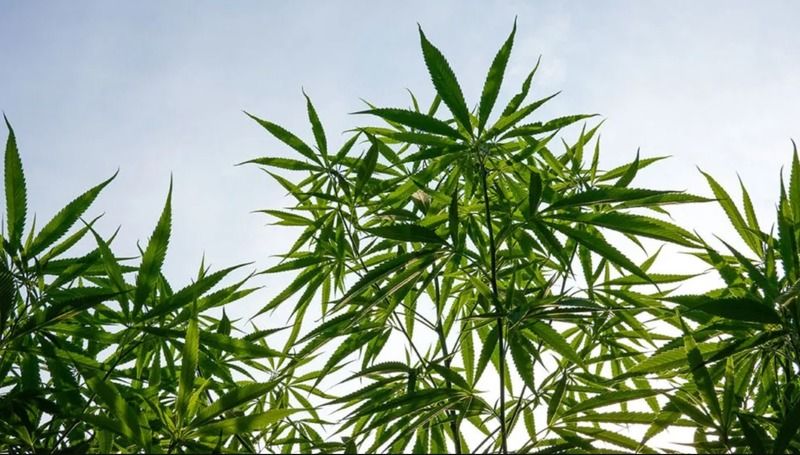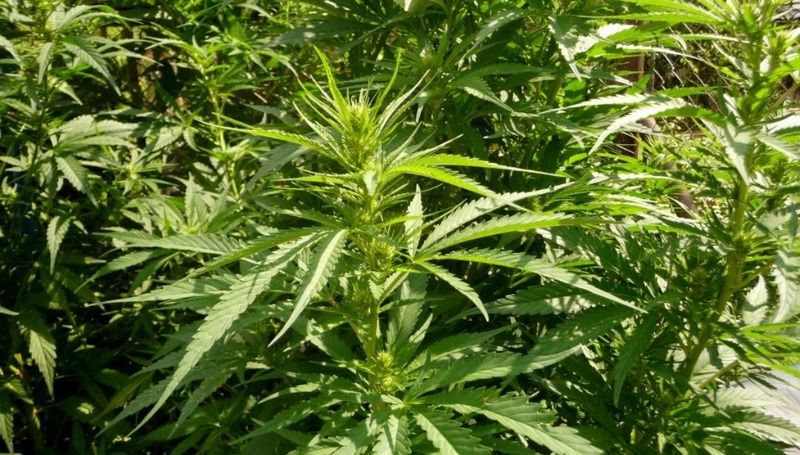Cannabis sativa L. is a prominent herbaceous species that has been used in folk medicine and as a source of textile fiber since the dawn of time, and it originated in Central Asia. This quick-growing plant has recently been rediscovered owing to its several applications: it also contains a variety of phytochemicals as well as cellulosic and woody fibers. Looking to try something new? Check out this.
Hemp is being researched by pharmaceutical and infrastructure corporations, since its metabolites exhibit significant bioactivities on human health and its outer and inner stem tissues can be used to manufacture bioplastics and concrete-like substances, respectively. The broad range of hemp phytochemicals investigated in this study, as well as the pathways by which they are made, have special attention.

Cannabinoids are a family of chemical compounds with medical applications that have attracted a lot of attention in the field of medicine owing to their wide range of therapeutic actions in people, including psychotropic activities. The therapeutic and commercial potentials for certain stilbenoids and lignans, especially stigmasterol and lignin, are also highlighted in light of present discoveries. Plant genetic engineering’s power is addressed by way of discussing plant genetic engineering’s capacity to improve hemp secondary metabolites production.
Plant cell cultures are studied in this research, which includes cell suspension and hairy root cultures. Hemp trichomes are also discussed in terms of their function as phytochemical producers, with particular attention paid to the possibilities for utilizing -omics technologies like metabolomics and transcriptomics to speed up the detection and large-scale production of lead chemicals from bioengineered Cannabis cell culture.
Introduction
The current climate and financial circumstances push us to utilize sustainable resources while reducing our reliance on petrochemicals while also minimizing the environmental effect. Plants are valuable natural resources since they contain both phytochemicals and lignocellulosic biomass. Hemp (Cannabis sativa L.), which is used in this study because it is a source of fibers, oil, and molecules, is discussed in detail. This part focuses on hemp’s (Cannabis sativa L.) applications as well as its wide range of phytochemicals.
Cultivation and Processing
Hemp is native to Central Asia. Hemp cultivation for fiber has been documented in China since 2800 BCE, and it was practiced in the European countries of the Mediterranean during the Christian era and throughout the Middle Ages. It was grown in Chile during the 1500s, followed by North America a century later.
Hemp is a perennial plant that may grow up to 5 meters tall (16 feet) in the right climate and produces seeds. Crops need at least 65 mm (2.5 inches) of rainfall every month throughout the growing season, and they are heavily seeded. Fiber-consuming crops are sown densely and produce plants that stand around 2 to 3 meters tall with few branches. Plants cultivated for oilseed are spaced farther apart and have more branches than those used for hemp seed production. Harvesting fiber as soon after the plants have reached maturity as feasible, when the mature blooms and freely shedding pollen of the male plants indicate that they are ripe, results in the greatest yield and quality. Although plants may occasionally be plucked by hand, they are usually cut about 2.5 cm (1 inch) above the soil line.
Industrial Hemp
Cannabis hemp is grown from the stalks of Cannabis sativa plants, whereas industrial hemp (also known as “poli” or “industrial”) is made from the seeds. The decortication process, which includes a shaking process that finishes separation from the woody portion and releases long, fairly straight fiber known as line, takes place in a number of steps. The fibres are composed of cylindrical cells with an uneven surface and can be more than 1.8 meters long (5.8 feet).
Marijuana is not legal in South Africa, and no laws exist permitting its growing, possession, or trade. This information is provided for educational purposes only and should not be interpreted as an indication that the National Botanical Institute endorses legislative change to ban cannabis.
Description
Dagga (Cannabis sativa) is a plant native to Asia, although it has now spread to many countries and has naturalized in southern Africa. It is a tall annual herb with hairless stems that grow up to four meters tall. Stems are hairy and green, with hollow internodes. Palmately compound leaflets alternate on the stem. The margins of sessile leaves have three to eleven teeth. The stalk of the leaf may measure 50 mm in length. Male and female flowers are tiny greenish yellow blooms that hang from separate plants, each having 4 mm diameter spotted seeds.
Hemp is a relative newcomer to the world of cannabis, yet has evolved into a highly versatile crop. There are three different types of hemp: var. sativa, var. indica, and var. spontanea. It has large leaves and is tall and loosely branched. It’s primarily cultivated for its fiber and oil from the seed. Leaflets range in size from five to seven broad at their widest points and taper toward both ends. THC levels in hemp are low, making it difficult to cultivate commercially in North America because it is illegal without a license (although some states do allow hemp cultivation).
The var. indica is shorter, more compact, and has a busier canopy. It’s been used as a medicine and a stimulant to change one’s mood. The majority of leaves are numerous, tapering towards the base, and rather fragile. Varieties with tiny leaves are often known as “spontanea.”
Distribution and habitat
Cannabis is found throughout southern Africa, with var. sativa in Botswana, Limpopo, North-West, Gauteng, Mpumalanga, KwaZulu-Natal, Lesotho, Western and Eastern Cape; var. indica in Mpumalanga; and var. spontanea in the Northern Cape.
Derivation of Name and Historical Aspects
Cannabis is a genus of flowering plants that includes at least 140 species. The Latin name for cannabis, Cannabis sativa, comes from Greek words meaning “reed” and “hive.” The Hottentot term dachah was shortened in Dutch to dagga. This indigenous name alludes to its long history in southern Africa.
Ecology
Marijuana seeds are dispersed by wind and water. It is suited for a wide range of terrains. Deer, birds, beetles, leaf-eating larvae, and slugs all consume the plant.
Uses
It is used to cure asthma, bronchitis, headaches, the flu, epilepsy, cough and pains. Plant-derived crude derivatives are used to treat migraine, epilepsy, malaria, glaucoma, nausea induced by chemotherapy treatment or hunger stimulation in cancer or AIDS patients. It’s also employed to alleviate muscular spasms in MS (B.E. van Wyk 2000).
Hemp fiber (often referred to as hemp) is utilized in the production of useful textiles and rope, and it is grown as a crop in certain countries for this purpose. Clothes manufactured of the material are more durable than those made of cotton or linen. The fibre is stronger than glass fiber, so it’s ideal for reinforcing automotive plastic components. When disposed of properly, it causes no environmental problems.
For the most part, people smoke marijuana for enjoyment since it causes hallucinations. Dagga smoking can cause respiratory problems and an impairment of the central nervous system, according to studies.
Growing Cannabis Sativa
It’s produced from seeds. Because it is illegal to grow this plant openly, it is often cultivated secretly in remote hillside areas where no accessible pathways exist. It thrives in fertile, warm regions if properly watered. Because its seedlings are frequently seen at smoking sites, camping grounds, and gardens, it is a self-seeding weed that develops rapidly in fertile, warm places.
